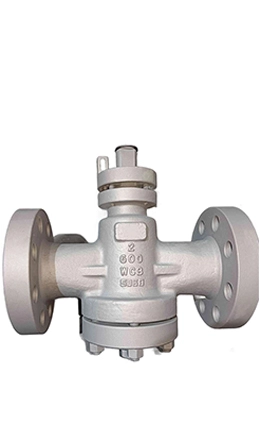Lubricated plug valves are quarter-turn mechanical valves. Sealing is provided by grease between two metal surfaces Because of this reason, it is called lubricated plug valve. They are used in various industrial facilities, notably oil & gas. Because of the lubricant, the closing, opening, and throttling of a lubricated plug valve is made easier. Similarly, the lubricated plug valve prevents corrosion in the valve and promotes proper seating when closed.


1. Regular Lubrication:
Frequency: Lubricate based on usage and manufacturer recommendations. High-use valves may need monthly lubrication, while infrequently used ones might require annual attention.
Lubricant Selection: Use a lubricant compatible with the fluid, temperature, and pressure conditions. High-temperature or chemical-resistant lubricants may be necessary.
Procedure: Inject lubricant while the valve is open to ensure even distribution. Cycle the valve several times post-lubrication to spread the grease and avoid over-lubrication, which can cause pressure issues or contamination.
2. Periodic Operation:
Exercise the valve regularly (quarterly or biannually) by opening and closing it to prevent seizing, especially if unused for long periods.
3. Inspection and Maintenance:
Leak Checks: Inspect for leaks around the seal and body. Address leaks by re-lubricating or replacing seals.
Wear and Tear: Examine the plug, body, and stem for wear, corrosion, or damage. Replace worn components promptly.
Debris Removal: Clean internal parts during maintenance to prevent obstruction or damage.
4. Corrosion Protection:
Apply protective coatings if exposed to corrosive environments. Use corrosion-resistant materials for components if specified.
5. Proper Installation and Alignment:
Ensure correct installation to avoid stress on the valve. Misalignment can lead to premature wear.
6. Operational Limits:
Monitor system pressure and temperature to stay within the valve’s rated specifications. Avoid overpressure scenarios.
1. Lubrication Requirement:
Lubricated: Require periodic injection of a grease or oil lubricant between the plug and valve body to reduce friction and enhance sealing.
Non-Lubricated: Use self-lubricating materials (e.g., PTFE, elastomers) or engineered coatings, eliminating the need for external lubrication.
2. Maintenance:
Lubricated: Higher maintenance due to the need for regular lubricant replenishment to ensure proper operation and sealing.
Non-Lubricated: Lower maintenance, as they rely on durable, low-friction materials that do not require ongoing lubrication.
3. Materials and Design:
Lubricated: Typically feature metal-to-metal contact, with the lubricant filling gaps and preventing wear. The plug is often conical.
Non-Lubricated: Incorporate sleeves or linings made of polymers (e.g., PTFE) or elastomers to reduce friction and wear, often with a cylindrical plug design.
4. Applications:
Lubricated: Suited for high-pressure, high-temperature, or abrasive fluid services (e.g., oil and gas, chemical processing). The lubricant can also help seal against particulates.
Non-Lubricated: Ideal for contamination-sensitive industries (e.g., food, pharmaceuticals, water treatment) and applications where maintenance access is limited.
5. Sealing Mechanism:
Lubricated: The injected lubricant acts as a sealant, filling irregularities between the plug and body.
Non-Lubricated: Relies on tight tolerances and the deformability of sleeve materials to achieve a leak-tight seal.
6. Operating Torque:
Lubricated: Generally easier to operate under high pressures due to reduced friction from the lubricant.
Non-Lubricated: May require higher torque over time as materials wear, though modern designs minimize this with smooth linings.
